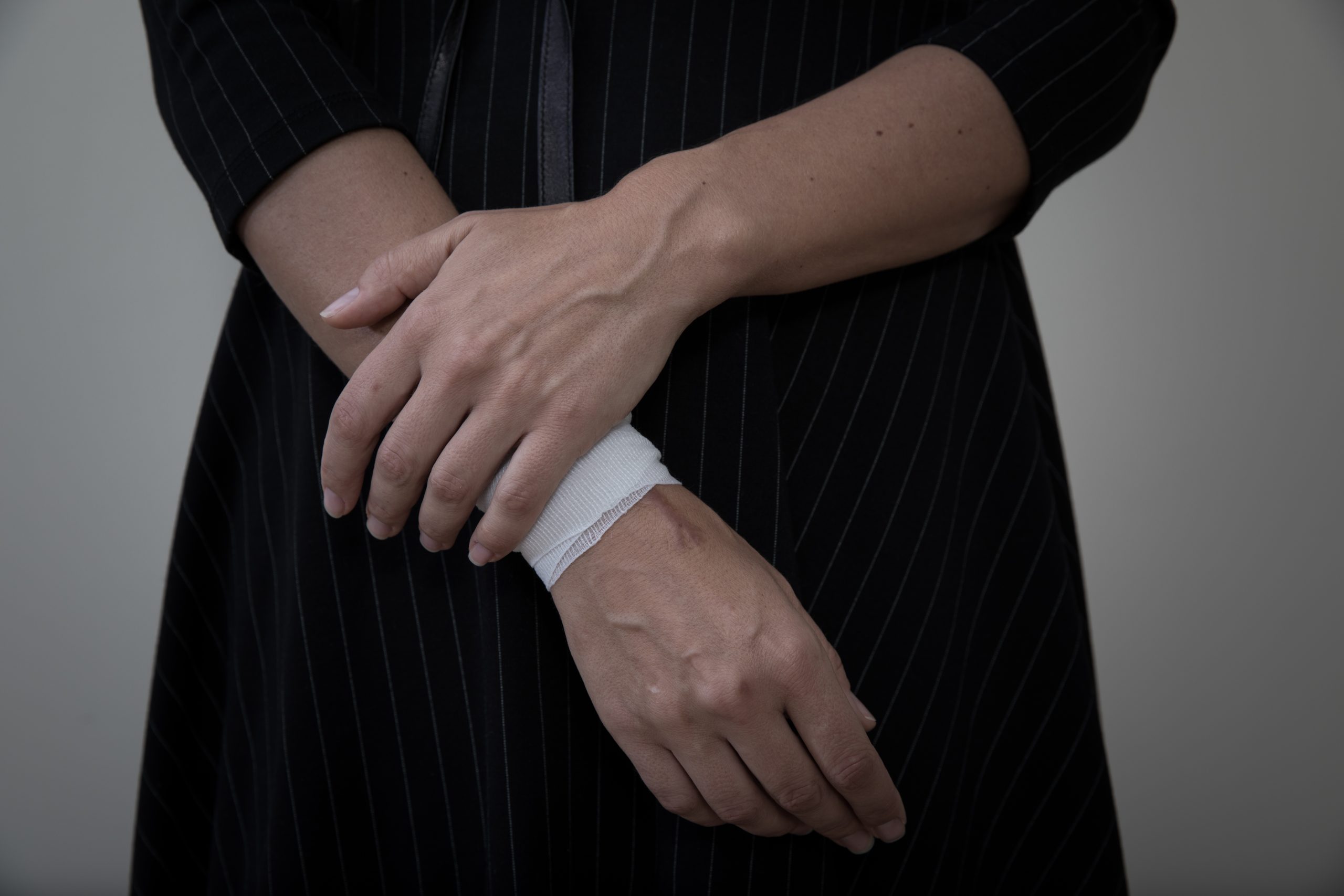
Self-harm is most simply explained as someone intentionally damaging or injuring their body. Typically, the most easily recognized type of self-harm is physical self-harm. Generally, self-harm is used to cope with or express emotional stress that the person cannot manage in any other way.
Sometimes those who engage in self-harm view it as a stepping-stone to further, more dangerous actions such as suicide. Data suggests more than half of those who eventually die by suicide have a history of self-harm in some form. Most individuals who engage in self-harm do so to punish themselves, express distress or relieve tension and anxiety that have become unbearable. Sometimes, it is a combination of all the above. Regardless of why it occurs, self-harm is a cry for help by your teen.
Situations that may Lead to Teen Self-Harm
Often when people think of the “type” of person who may engage in self-harm, they think of young adults or individuals with already diagnosed mental health conditions. Unfortunately, self-harm is far more common in adolescents and teens than most realize. Although people of all ages may engage in self-harming behaviors, it is estimated that between 10% and 25% of teens and young adults will engage in these behaviors at some time. Self-harming behavior can occur for many reasons, but some of the most common are listed below.
Social problems
Today, many children, teens, and young adults are engaged in a consistent struggle to cope with extreme stress levels. This stress can be present at school, within their family units, and in their relationships with peers. It is not uncommon for teens to be extremely busy and stressed from school obligations, sports, family obligations, extracurricular activities, and peer relationships.
Additionally, our current world is highly media-driven and consequently quite toxic and damaging. It is easy for teens to fall prey to the ever-present negativity and hostility on social media outlets today. For teenage girls, there is also the added pressure of the “standards” associated with their physical appearance, which tend to be imposed both by relationships with peers and social media pressures. Girls who feel as though they have failed to live up to these standards may turn to self-harm as an outlet.
Trauma
Experiencing or witnessing a traumatic event can also cause teens or children to turn to self-harm to escape their emotions. Traumatic experiences can include abuse (physical, sexual, or emotional), natural disasters, illness, accidents, or the death of a close family member or friend.
Mental health struggles
Symptoms of certain mental health conditions can lead to overwhelming challenges for teens. Some may struggle with mental health issues that result in their hearing voices or having powerful thoughts that tell them to do things. In some cases, these thoughts or voices tell the person to self-harm. Self-harming behaviors are also linked to severe depression, PTSD, and anxiety. Some teens may also experience painful or unpleasant physical symptoms of a medical condition that can lead to self-harm to reduce or relieve pain.
Recognizing Self-harm in Teens
Recognizing Self-harm in Teens
There are several things adolescents and teens may do to self-harm. These can include things such as cutting, burning, punching or hitting. Cutting and burning are among the most common forms of self-harm. Performing these actions interrupts painful or unpleasant emotions related to mental or physical health struggles. The sensation of pain associated with cutting or burning often releases endorphins that offer a “rush,” which allows for a temporary escape from their current feelings. Similarly, the discomfort associated with punching or hitting results in the endorphin release that results in distraction. While potentially not as dangerous as cutting or other self-harming behaviors, these behaviors can still result in injury.
Teens who engage in self-harming behaviors will often try to hide their behavior. Because they actively attempt to hide bruises or marks, it is possible parents, teachers, or caregivers may overlook their injuries at first. This can put your teen at a greater risk for further injury. If you are concerned your teen might be self-harming, there are some things you can look for that may help you identify this dangerous behavior and seek help at a teen-focused treatment center like Beachside.
Examples of activities or symptoms to look for may include unexplained cuts, burns or bruises, wearing long sleeves or pants despite warm weather, signs of depression or significant mood changes, desire for self-punishment, expressions of self-loathing, statements about wanting to harm themselves or others, abnormal voluntary isolation, and visible signs of other forms of self-harm such as missing hair or fingernails.
What Can You do to Help Your Teen?
Self-harming behaviors can be hard to notice as the outward signs are not always visible. Often, a parent or close peer sees the behavior first. As a parent, you can help by addressing your feelings and seeking help for your teen.
Address your emotions
First, it is essential to accept your emotions related to the situation. If you suspect or find that your child or teen is harming themselves, it is natural to feel a wide range of emotions. These can range from anger or sadness to confusion and fear. You may also feel upset or hurt that your child did not feel they could come to you for help. These emotions are all ok. It is essential to take the time you need as a parent to identify what you are experiencing and find a way to address and express those feelings. Until you can gain perspective on your emotions, you cannot adequately provide the support your child needs.
Communicate
Talk to your child. This is a painful topic, and it is not easy to talk about. You may have no idea how to address the subject or what to say. Remember, what you say isn’t nearly as important as how you say it. Avoid accusations or assumptions. Voice your fears and concerns, and make sure they know you are willing to walk with them on their journey to healing.
Realistically, this will be equally as hard for your teen to talk about with you. Your teen may feel embarrassment, shame, or worry. They may fear your reaction or the consequences of your response. You can help alleviate these worries by being patient, open, and listening to what they say without lecturing, scolding, or punishment. If your teen shuts down and resists your efforts to talk about self-harm, don’t give up. Find another time to approach the subject and try again.
Be encouraging and positive
Above all, offer your teen encouragement and support. If you choose to seek professional help, stay involved in the process as much as possible. This will help your teen to know that you are there for them. It may also help let your teen know you are there to talk to when they experience something painful or difficult. This may encourage them to talk to you first before engaging in self-harming behavior. Encourage them to talk to you about their day or the events of the day. Be sure to focus on the positive parts of their day and how those events impacted them.
When and How to Seek Help
There isn’t a best practice treatment for self-injuring behavior. Treatment plans are designed around the specific issues your child or teen is experiencing and the underlying mental health conditions that could be leading to the behavior. For instance, if the self-harming behavior is related to a mental health disorder such as depression, the treatment plans will address the mental health condition and the resulting self-harming behavior. Some of the most common therapy options include psychotherapy and medications.
Psychotherapy is also known as talk therapy. This form of treatment can help your teen better identify and address the underlying issues they are experiencing that trigger the self-harming behaviors. It can also help your child or teen better regulate their emotions and learn how to manage the stressors they are experiencing in a safer and healthier way. Psychotherapy techniques include treatment models such as cognitive-behavioral therapy (CBT), dialectical behavior therapy (DBT), and mindfulness-based therapies.
Medication use sometimes accompanies therapy for mental health treatment. Currently, no medications are used to treat self-harming behavior; however, if the self-harming behavior is related to another mental health condition such as depression or anxiety, members of your teen’s treatment team may use medications to treat the underlying condition.
Self-harming behavior may be best treated as part of a residential treatment program. The most severe consequence of self-harming behavior is loss of life. Unfortunately, some people who engage in these behaviors cannot stop before harming themselves irreparably. For children and teens who are unable to address their self-harming behaviors in an outpatient setting or for whom symptoms of the disorder are too intense or too persistent for an outpatient setting to be entirely successful, residential treatment may be the best option.
Residential treatment programs for teens like Beachside can be individually designed to meet the specific needs of the individual through options such as weekly counseling sessions, group counseling, and individual counseling. Additionally, a residential setting offers the opportunity for medical interventions that may be necessary depending on the severity of the self-harming behavior. For inpatient and residential settings, a team approach is the best method for treating a variety of teen mental health needs, including the underlying mental health issues that can lead to self-harming behavior. A team approach will likely include a variety of medical professionals, including a medical doctor, mental health professional, and nutritionist, among others.
If you have tried other treatments and feel a residential program may be helpful, look to Beachside. Our providers understand how the struggles your child is experiencing can significantly impact their overall health, emotional well-being, and their ability to thrive. Let us show you how our program at Beachside can help your family. Why not reach out for a callback or to set up a tour?
https://www.nhs.uk/conditions/self-harm/
https://www.aamft.org/Consumer_Updates/Adolescent_Self_Harm.aspx
https://www.mayoclinic.org/diseases-conditions/self-injury/diagnosis-treatment/drc-20350956




